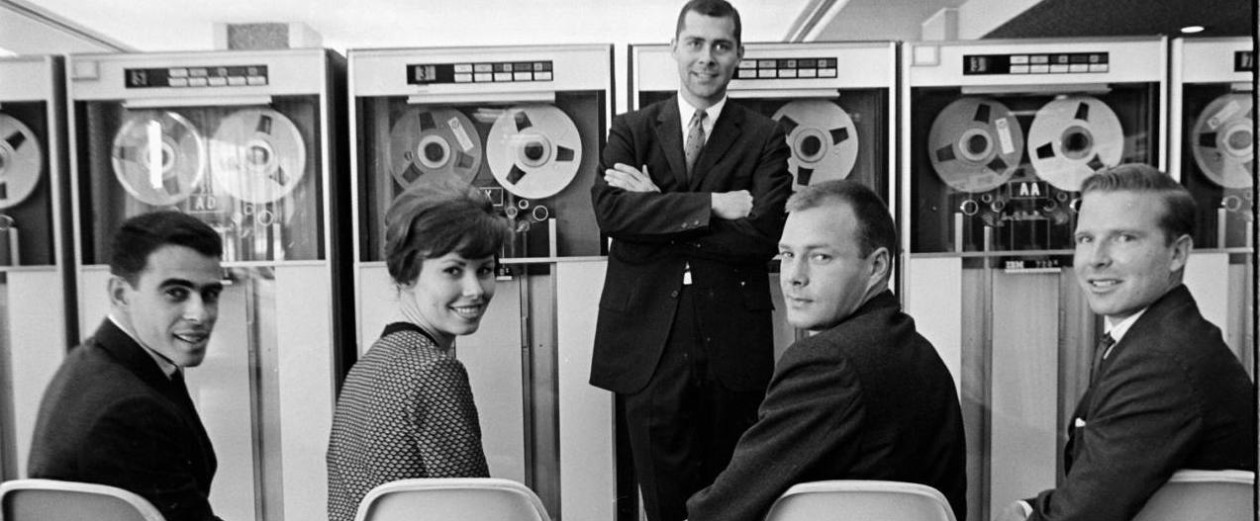A recent article in the New York Times described an innovative vocational training program recently launched by Pathways in Technology Early College High School in Brooklyn, New York. In this six-year program that provides both a high-school degree and an associate’s degree, students pursue an alternative path towards careers in the computer industry. The curriculum was developed in part with help from IBM.
The idea that a traditional college degree was not necessary (or even appropriate) for training in the computer fields is not new. From almost the very beginning of the computer industry, the pressing demand for programmers, and the unique nature of the skill-set that seemed to be required by programmers, caused considerable concern about how to train programmers cheaply and effectively. Much of the Computer Boys book is, in fact, about the various responses to this perceived problem, which included the widespread use of aptitude testing and personality profiles, as well as the formation of vocational schools. The resemblance of the history to the program described in the recent NY Times article is not the subject of this particular post.
What struck me most about the NY Times piece was not the article itself but the accompanying images. All of the students in these images are either black or Hispanic. In part this reflects the demographics of the Brooklyn neighborhood in which the Pathways High School is located, but the total absence of white faces is a reminder of one of the unanswered questions in the history of computing: namely, what about race and class? As anyone who has studied any of the social sciences knows, race, class, and gender represent the holy triumvirate of analytical categories. It is often productive to ask questions about any (and all) of this trinity, because interesting answers almost always result.
In recent years the history of computing has done a much better job dealing with gender. Race and class, however, are still almost invisible. When I present on my work on gender and computing, and talk about the ways in which the computer industry, in its infancy, at least, was unusually open to women, I will frequently get a follow-up question about race. Presumably the same openness and lack of barriers to entry that made programming appealing to women would have made it equally appealing to other minorities, the questioner implies. This is an excellent question, and I wish I had a better answer…
There is some evidence that computer programming was perhaps more open to non-whites than other technical professions. Particularly for those who equated “programming” with “coding” (that is to say, low-skilled, largely mechanical labor), the use of ethnic minority workers (like female workers) represented a way to inexpensively increase the output of the “software factory.” A number of high schools, often in the southern states, started vocational programs aimed at training African-American youth to work in the computer industry. In fact, in 1967 the New York Times published a piece on a Commerce Department program that is striking similar to it recent 2012 article. The target of the Commerce Department program was “boys from lower economic levels,” but again the accompanying photo was of a young black man.. A few years earlier, the Times had published another piece whose headline claimed “Computer Seen as a Boon to Negro.” The argument was that although automation might be disproportionately affecting African-Americans, it also potentially promised them new opportunities working as computer programmers: “Computer people are in short supply, and if a company needs a good programmer, they don’t care what his race, creed, or color are as long as he can do the job.”
The language of this last piece is strikingly similar to that used to describe the opportunities for women. But whereas getting data on women in the computing professions is difficult, getting data on race is almost impossible. The earliest data I have is from the 1970 census, which noted that, out of 161,337 total programmers, 5,837 (3.6%) were black and 3,559 (2.2%) were Hispanic. For the formative first few decades of the computer industry, I have nothing but anecdotal data.
It is clear, however, that just as computer programming was made masculine over the course of the 1970s (in the sense that the idealized stereotype of the programmer was transformed from female to male), computer programming also became increasingly white (again, if not in numeric terms, at least as a cultural category). The sociologist Ron Eglash has a beautiful piece on contemporary attitudes towards race and computing entitled “Race, Sex and Nerds: from Black Geeks to Asian-American Hipsters” that I use all the time in my teaching. But a larger history of race in computing has still to be undertaken. Graduate students, be aware!
 There have been a number of exciting new books in the history of computing that have been published in the past year. The most recent is Charles Yood’s Hybrid Zone: Computers and Science at Argonne National Laboratory, 1946-1992 (Docent Press, 2013).
There have been a number of exciting new books in the history of computing that have been published in the past year. The most recent is Charles Yood’s Hybrid Zone: Computers and Science at Argonne National Laboratory, 1946-1992 (Docent Press, 2013). 
 Follow
Follow